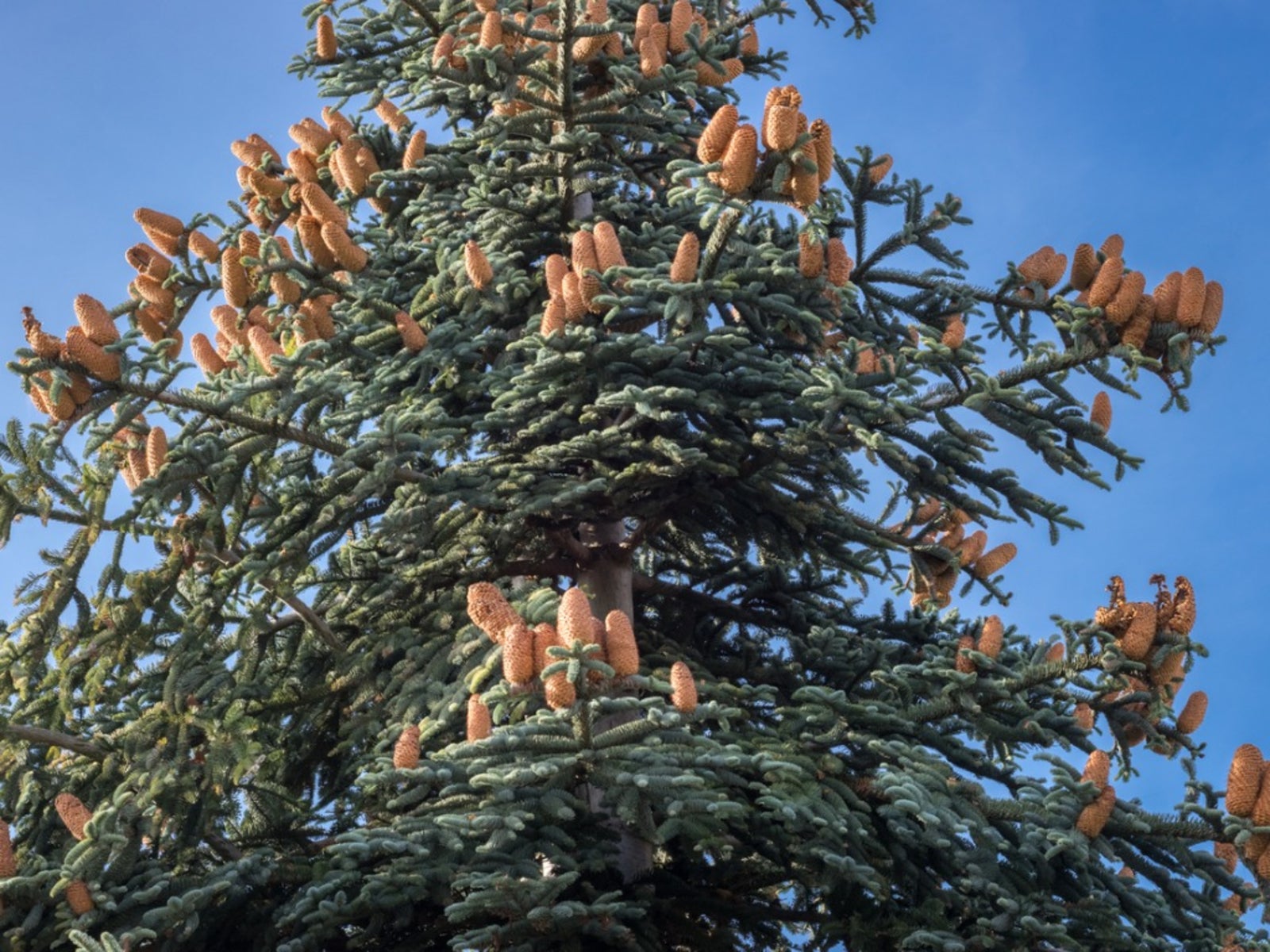Noble Fir Information: Caring For Noble Firs In Landscapes


Noble firs (Abies procera) are extremely attractive evergreen trees and the largest native firs in America. You can recognize noble firs by their unique cones that sit upright on the top of the branches. Planting a noble fir isn’t difficult in the correct hardiness zones. Read on for more noble fir information and tips on caring for noble firs.
Noble Fir Information
Noble firs are tall, narrow evergreens with horizontal branches. According to noble fir information, they are popular Christmas trees and offer that lovely scent. However, only young noble firs are appropriate as holiday trees. Mature noble firs in landscapes can grow to 200 feet (61 m.) with a trunk diameter of 6 feet (2 m.). If you start noble fir growing, you’ll see that these trees have flat needles. Their cones can get between 6 and 9 inches (15-23 cm.) long. Instead of hanging down, noble fir cones perch on branches, looking a bit like candles on old-fashioned holiday trees. Noble firs in landscapes can live a long time. They are pioneer trees, growing in quickly after a forest fire clears an area. The wood is strong and of high quality.
Noble Fir Growing
If you want to include a noble fir in the landscape, you need to know that these trees do best in cool climates. Noble fir growing is limited to USDA plant hardiness zones 5 and 6. Planting a noble fir tree works better if you live between 1,000 and 5,000 (305-1,524 m.) feet in elevation. Noble fir growing at lower altitudes can get root rot. Those interested in noble fir growing need to find a proper site too. Locate a sunny area with cool, moist, acidic soil. Be sure the tree gets at least four hours a day of sunshine. Look for a location with shelter from the wind as well. Noble firs in landscapes last longer and look better if they are not buffeted regularly by strong winds. Caring for noble firs is not difficult. Once you plant a seed or a young seedling in an appropriate site, simply be sure that it gets enough water while its root system is developing. This native tree needs no fertilizer or special care.
Sign up for the Gardening Know How newsletter today and receive a free copy of our e-book "How to Grow Delicious Tomatoes".

Teo Spengler is a master gardener and a docent at the San Francisco Botanical Garden, where she hosts public tours. She has studied horticulture and written about nature, trees, plants, and gardening for more than two decades, following a career as an attorney and legal writer. Her extended family includes some 30 houseplants and hundreds of outdoor plants, including 250 trees, which are her main passion. Spengler currently splits her life between San Francisco and the French Basque Country, though she was raised in Alaska, giving her experience of gardening in a range of climates.